We visited Trehunsey Bridge that spans the River Tiddy like we do every couple of weeks for morning coffee and for a look around at wildlife. The first thing I do, after crib, is to walk up the road leading to Pengover where there is an adit that drained water from the nearby Treweatha Mines. The sediment is an orange colour which I think is iron ore in the waste water.
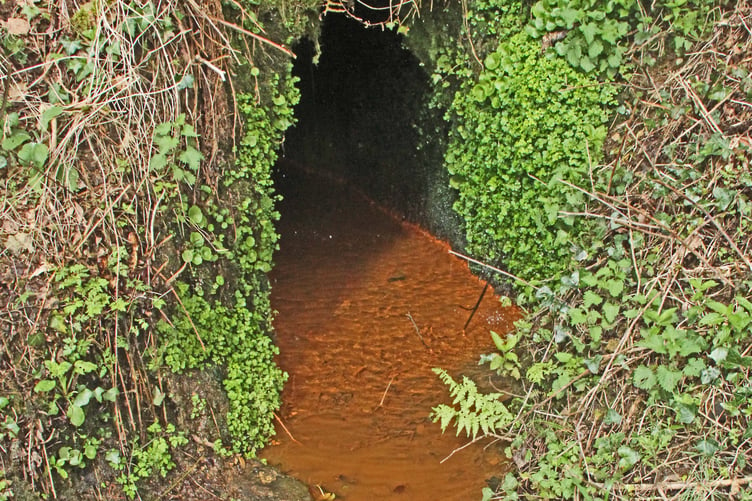
The Tiddy rises just below Pensilva and for a small river, it once provided power for several mills, now long disused. The first was Butterdon Mill up on the Liskeard to St Ive road and then Hepwell Mill down near the disused quarry and then about a mile and half downstream to power Tilland Mill. Then it provided power for a sawmill at Cutmere, before going the short distance to Tideford Mill and then becoming tidal and wider.
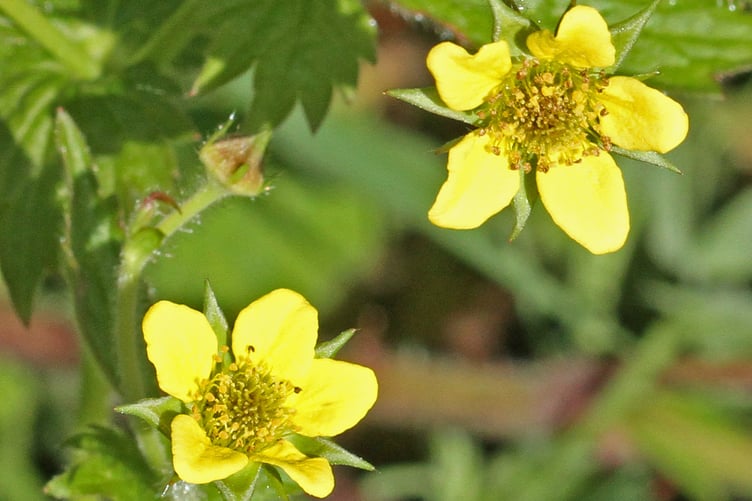
After spotting a large red damselfly, one of the first damselflies to appear every year, I walked the short stretch of shaded road leading from the bridge in the direction of Quethiock. Traffic is almost non-existent and there is always a chance of seeing a fox or roe deer.
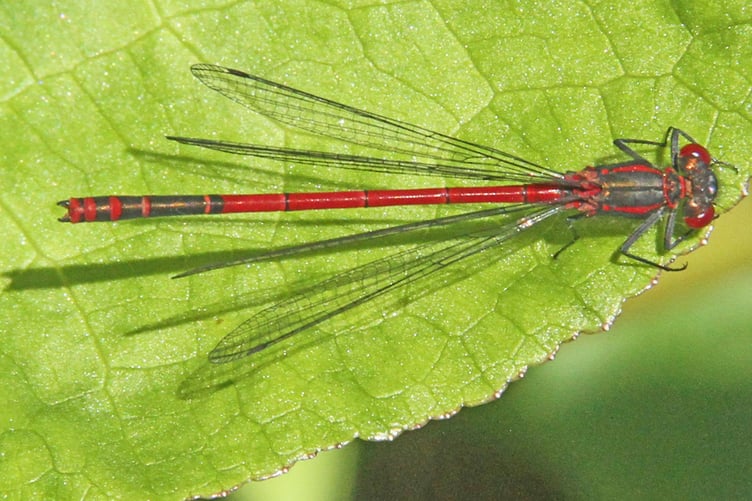
There were loads of bluebell, red campions, alkanet, wood avens and several large clusters of ramsons. There was also lots of common cleavers or goose grass with no flowers yet, but with long runners that climb through vegetation with backward facing bristles that cling to animals and the clothes of walkers.
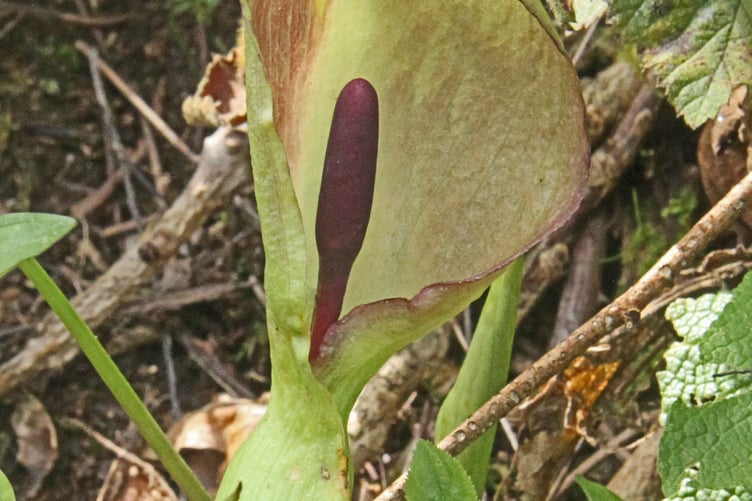
A few lords and ladies were on the hedges and on the wider verge. They are the flowers of the arum maculatum plant and acquired several other names such as Adam and Eve, sweethearts and cuckoo pint. The flower is contained in a sheathing hood and emits a smell of decay to attract flies. During Elizabethan times a white starch was made from its roots.
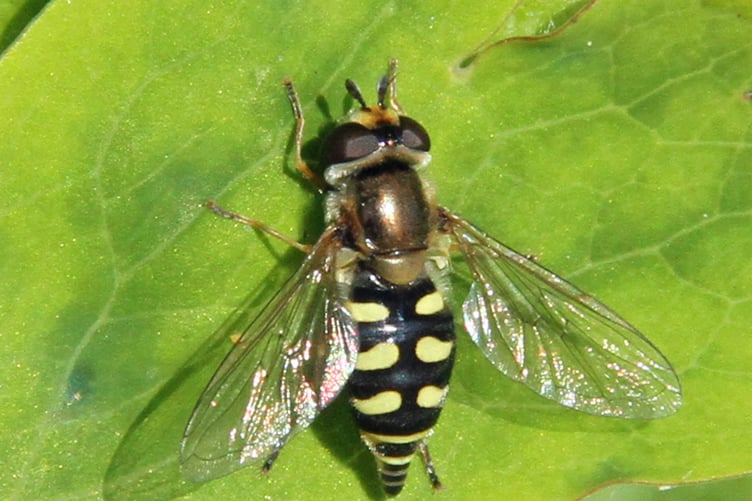
I spotted a black and yellow hoverfly patrolling the road hedge and was able to identify it as an eupeodes luniger. This is one of the first hoverflies to be seen in the Spring and is on the wing until Autumn, feeding on pollen and nectar. Although they look remotely like wasps, they are completely harmless. A speckled wood butterfly was fluttering along the quiet road but it never pitched for very long, so I had to follow it for quite a stretch before managing to get one picture.
Herb Bennet plants were dotted along the hedgerow with their five petalled yellow flowers on long stems. Named for St Benedict, the founder of the Benedictine Order of Monks because of its magical powers, which led to the practice of men carrying a small root in their pocket to ward off venomous beasts.
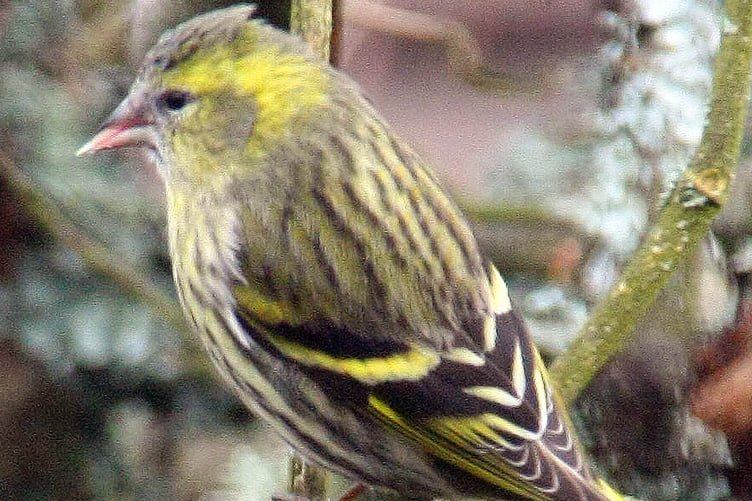
I saw a siskin perched of some dry twigs where there were a lot of short alder trees near the river. A member of the finch family, these pretty little yellow, grey and black birds feed on the seeds of conifer, alder and birch trees and are best known as winter visitors.
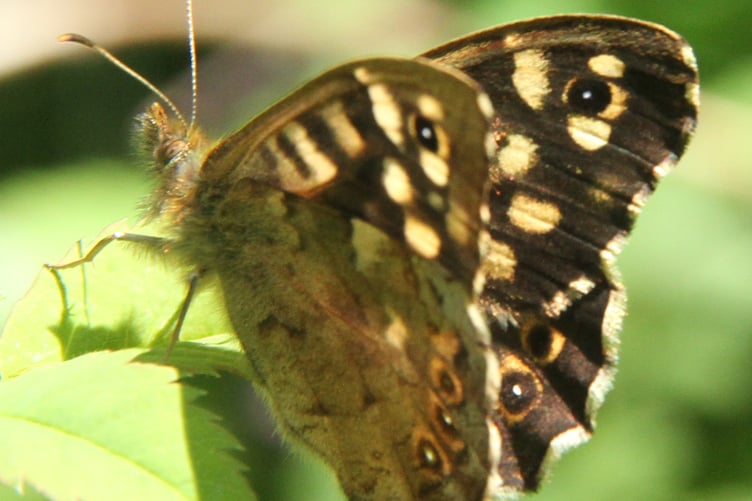
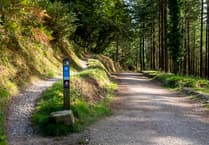
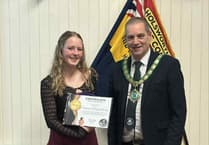

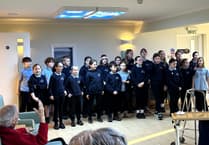
Comments
This article has no comments yet. Be the first to leave a comment.